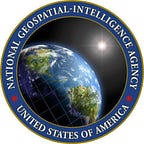Mapmaking behind the Iron Curtain
Story by Carling Uhler, NGA Office of Corporate Communications
Photos by Erica Knight, NGA Office of Corporate Communications
John Davies doesn’t miss a chance to stop by a local map shop when traveling around a foreign city.
Davies, a lifelong map lover and collector, found himself in Latvia in the early 2000s when his journey down the path toward creating a comprehensive collection of Soviet maps began.
Soon after, Davies found a compatriot in Alex Kent, PhD, a then-geography grad student and now-professor of cartography and geographic information.
The men’s shared enthusiasm for studying the incredible detail in the enormous collection of Soviet maps led to research on the maps’ creation and design, and a comprehensive website where cartophiles and historians alike can read more about the subject.
Kent and Davies recently sat down with NGA’s Geointeresting podcast team to talk about the hows and whys of Soviet Cold War mapmaking, and its impact on modern-day cartography.
Podcast Highlights
“Not better, but different.”
— On whether the USSR was better at mapping than the U.S. and Great Britain.
Davies continues, “I think that geodesy and cartography are very much a part of the Russian soul … so I think they were good at it [mapping] anyway. I think they had a different objective in mapping — which was not invasion or military maps per se, but as a way of cataloging the world. Or, as Kent calls it, a ‘Wikipedia of the world.’
“An assumption is that eventually communism will prevail across the world … and if you’re going to be in charge of the world, you’ll need to know where things are.”
— On why the Soviets mapped with such incredible detail, down to bus stops, police stations and water facilities.
“You need to know that sort of information, ready for the day when it’s needed,” said Davies.
“If it was known, it went on the map.”
— On how the Soviets came to have such a vast, comprehensive collection of detailed maps. Kent continues — “I think our [U.S. and U.K.] maps were much more selective and the Soviet maps much more comprehensive.”
“You can look at a western map as being a way of finding your way around — the Russian map is more explaining where you are, and what’s here.”
— On the differences between western mapping and Soviet mapping purposes.
“A bridge will be annotated with the height above the river, clearance under the bridge, the carrying capacity of the bridge, and the material it’s made of…”
— On the level of detail found in the USSR maps that Davies and Kent have collected and studied. “It’s details like that, that fascinate you and draw you into these maps … how did they get this information … and why did they think they needed to know it?” said Davies.
“You can explore a map much more than you can an image.”
— On the technological and user expectation differences in cartography over the years. Kent continues — “You can always learn something from these maps.”
And finally, speaking to a favorite aspect in their map studying ventures —
“I think maps are very personal…we forget sometimes that people are behind cartography, and it’s good to be reminded of that sort of thing.”
For more from John Davies and Alex Kent, listen to the latest episode of NGA’s Geointeresting podcast.
Like us on Facebook | Follow us on Twitter
About NGA: The National Geospatial-Intelligence Agency delivers world-class geospatial intelligence, or GEOINT, that provides a decisive advantage to warfighters, policymakers, intelligence professionals and first responders. Both an intelligence agency and combat support agency, NGA fulfills the president’s national security priorities in partnership with the intelligence community and the Department of Defense.
